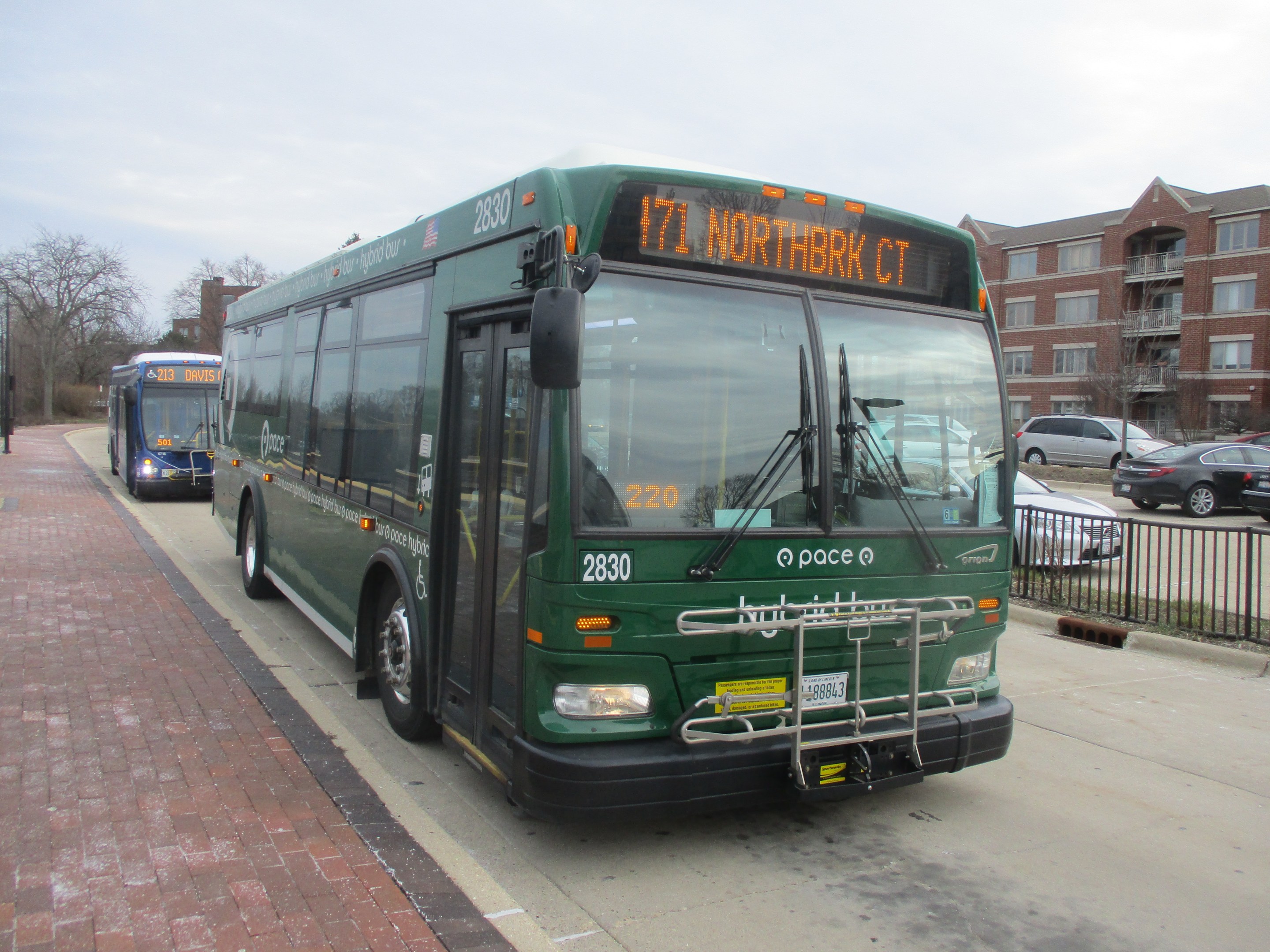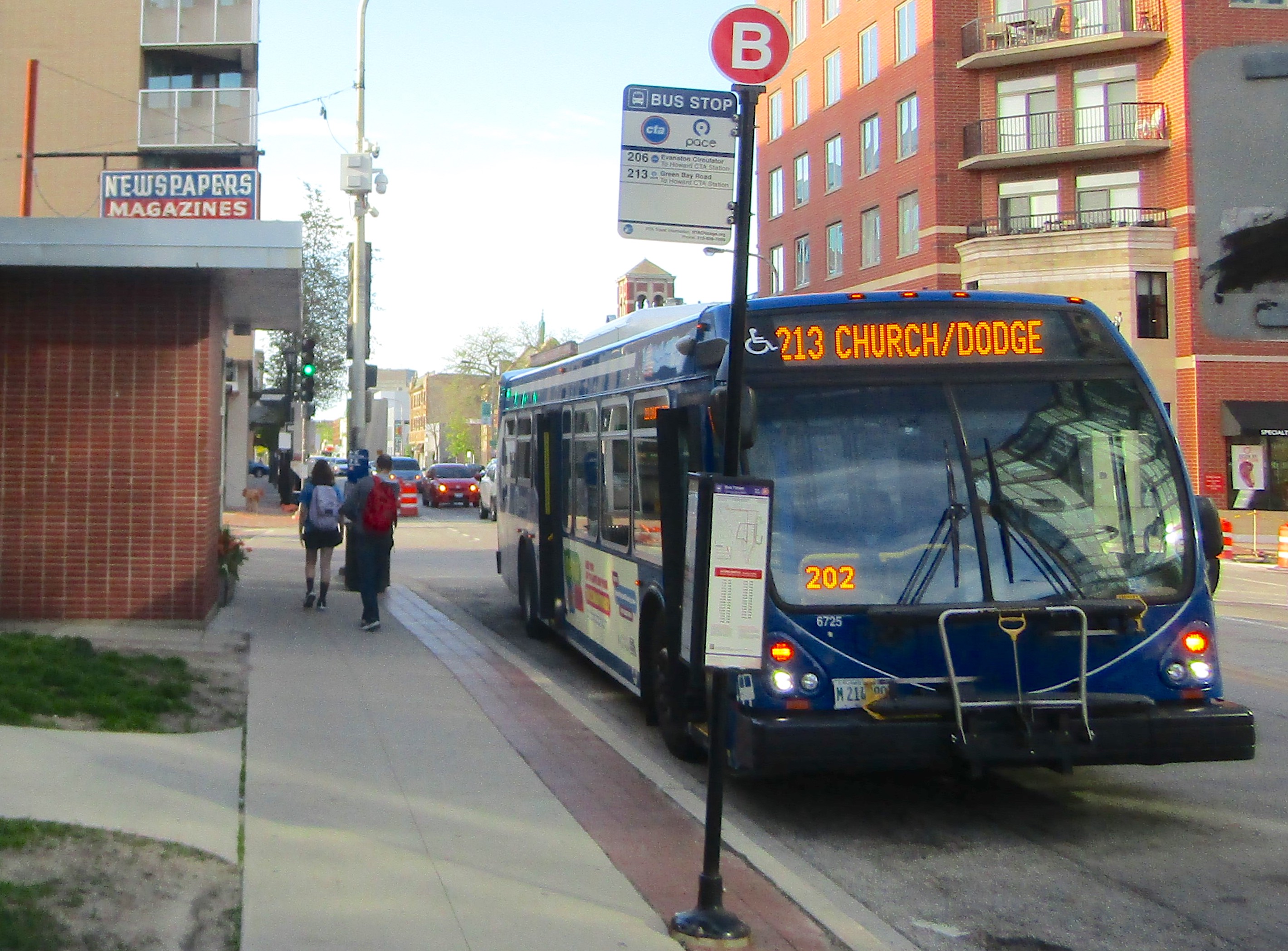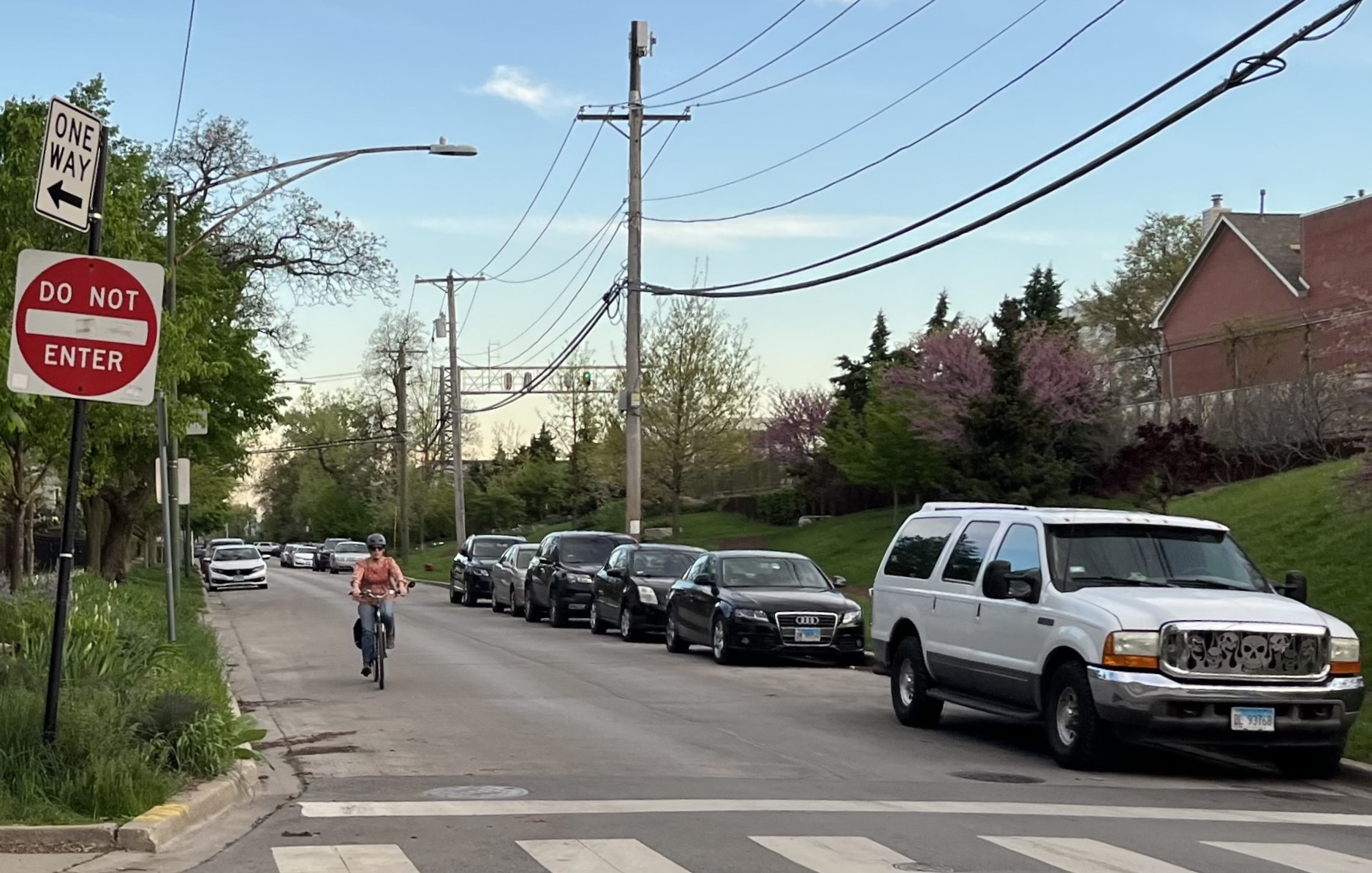In 2012, the Pace suburban bus system launched a diesel-electric bus pilot project in Highland Park. But nowadays the two distinctive green buses that still run between Highland Park and nearby Highwood, Deerfield, and Northbrook are the only evidence that the project ever happened. The program was never expanded because Pace felt that the cost of the buses and the fueling infrastructure was high enough to wipe out the fuel savings.
But that isn't to say that Pace has given up on alternative fuels entirely. Since 2016, it has gradually added compressed natural gas buses to its southern Cook County routes. As Pace spokeswoman Maggie Daly Skogsbakken explained, while CNG buses also cost more then traditional diesel buses, the price difference isn't as a dramatic as with diesel-electric buses, allowing the transit agency to achieve the net savings it was looking for.
According to Daly Skogsbakken, the original pilot was launched at the request of then-U.S. Congressman Mark Kirk, who represented Illinois' 10th Congressional district (which includes Highland Park) between 2000-2010. With his support, Pace secured federal funding to buy the two 30-foot, 29-seat diesel-electric buses.
According to a Metro magazine article published at the time, the buses' engines “switch between an electric motor and a diesel engine to conserve fuel and reduce exhaust emissions.” While by that point most of the agency's buses were blue with white accents, the new buses were painted green, with “hybrid bus” written along the roof and under the windows.
As the Chicago Tribune reported at the time, the buses cost $525,000 each. While that was more than $288,000 it would have cost to buy a conventional diesel bus, Pace believed that, because the diesel-electric vehicles were 25-percent more fuel-efficient, the transit agency would save money in the long run.
The buses were deployed on two of the three routes serving Highland Park – Route 471 and Route 472. Both routes start at the Highland Park station of Metra's Union Pacific-North line. Route 471 heads west and south, serving western Highland Park and portions of Deerfield and Northbrook. Route 472 heads north, serving Highland Park, Highwood and Fort Sheridan.
Daly Skogsbakken explained that these routes were chosen for a reason. “Mark Kirk advocated for these vehicles, so a garage in his district was chosen to demo the vehicles,” she said.
At the same time, as part of a separate pilot program, Pace received ten diesel-electric paratransit buses from the state of Illinois. But that project didn't pan out. “The vehicle company [that built those buses] went out of business,” Daly Skogsbakken explained. “We could not get parts and thus could not address maintenance issues.”
As for the 30-foot diesel electric buses, Pace decided that buying more of them simply wasn't worth the cost. “We are able to support the two hybrid buses we still have, but we don’t have the infrastructure -- charging stations -- to support a hybrid fleet or the funding to build stations or buy more hybrid vehicles,” Daly Skogsbakken said.
But Pace still looked at other ways to reduce fuel costs and get more bang for their buck. That's why in 2016, the agency announced plans to buy 91 buses that would run on compressed natural gas – a cleaner-burning, less expensive alternative to diesel. The new vehicles are longer then the diesel-electric buses, with 37 seats. While the new buses cost about $50,000 more than diesel buses, they are cheaper then diesel-electric buses. (Construction of the CNG fueling facility and garage retrofitting cost a total of $12 million.) Between this and the fuel-savings, buying CNG vehicles made the most financial sense, according to Daly Skoggbakken.
“An electric bus [costs] nearly 50 percent more than a CNG bus and fuel savings, at this time, do not make up the difference in cost over the life of the vehicle,” she said. “[GNG buses] are a little more expensive than diesel buses, but have significant fuel cost savings that offset the higher vehicle cost and continue to provide fuel savings through the life of the vehicle.”
Pace put the first fueling station at its south-suburban Markham garage, where the buses used on most routes serving southern Cook County and parts of southeast Will County are based. “South was chosen because the fleet was due for replacement, so the timing made sense,” Daly Skogsbakken said. “Also, we own the land surrounding the garage, so we could build the necessary fueling station.”
The CNG buses stand out less then the diesel-electric buses – they use Pace's regular color scheme, and most design elements aren't dramatically different from other newer buses in Pace's feet. But they do come with a visibly taller roof that has “Keeping the Pace with Natural Gas” slogan painted on its sides.
Daly Skogsbakken said that 80 CNG buses are currently on the road. She expects the remaining 11 to be in service by the end of this year.
In the 2016 press release, Pace stated that it expects to save $1 million in fuel costs, and it could potentially save more if other garages are converted. Asked whether Pace was considering putting CNG buses and infrastructure in other parts of the Pace system, Daly Skogsbakken said that's a possibility, but the agency hasn't made any concrete plans to do so yet. “As we build new facilities, we will of course consider CNG,” she said.




